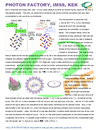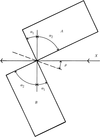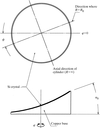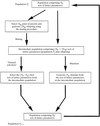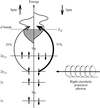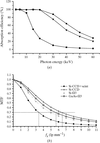issue contents
March 1999 issue

Cover illustration: The C-TRAIN detector assembly on XAFS station 7.1 of the SRS, see Derbyshire, Cheung, Sangsingkeow and Hasnain, pages 62-63.
facility information
fast communications
Successful recording of X-ray biprism interference patterns at several wavelengths has been achieved. The application of biprism fringe visibility measurements in synchrotron X-ray beam characterization studies is proposed.
A small footprint detector has been designed, built and commissioned for X-ray fluorescence applications. It provides an active area of greater than 90% compared with 36% of the conventional design.
research papers
In order to achieve simultaneous tuning of the beam demagnification rate and the radius of curvature for focusing over a wide wavelength range, a new single-crystal focusing monochromator has been developed.
A scanning-type X-ray spectrometer for Compton profile measurements has been built at the ESRF. The construction and performance are described in the present paper.
Examples of structural studies on materials under high pressure and temperature demonstrating the strength of combining high-pressure/temperature cells with area detectors, enabling detailed structural information to the extracted using Rietveld refinement.
This paper describes a new technique for indexing powder diffraction data, based on consideration of the whole powder diffraction profile and using a genetic algorithm for global optimization of the lattice parameters.
By small-angle X-ray diffraction studies with a high angular resolution, reflections due to long and similar structural periods of the two kinds of protein filaments were separated.
In this work, actinide (U, Np, Pu) nitrato species are probed by LIII-edge X-ray absorption spectroscopy measurements.
Gd monolayer films on Fe(100) are studied using circular X-ray magnetic dichroism and X-ray standing waves. The combination of the two techniques offers new perspectives for the in situ characterization of electronic and structural properties of thin magnetic films on crystalline substrates.
short communications
Report on the use, for the first time, of semiconductor pixel detectors in X-ray powder diffraction.
The new network, based on a 100 Mbps Ethernet, consists of a DEC Alpha Server 4000 with a 115 Gbytes RAID disk, DLT as a backup device, CISCO PIX-32 as a firewall between the TARA private network and KEK, and a 100 Mbps switching hub to be linked to image-plate readers and work stations.


 journal menu
journal menu













